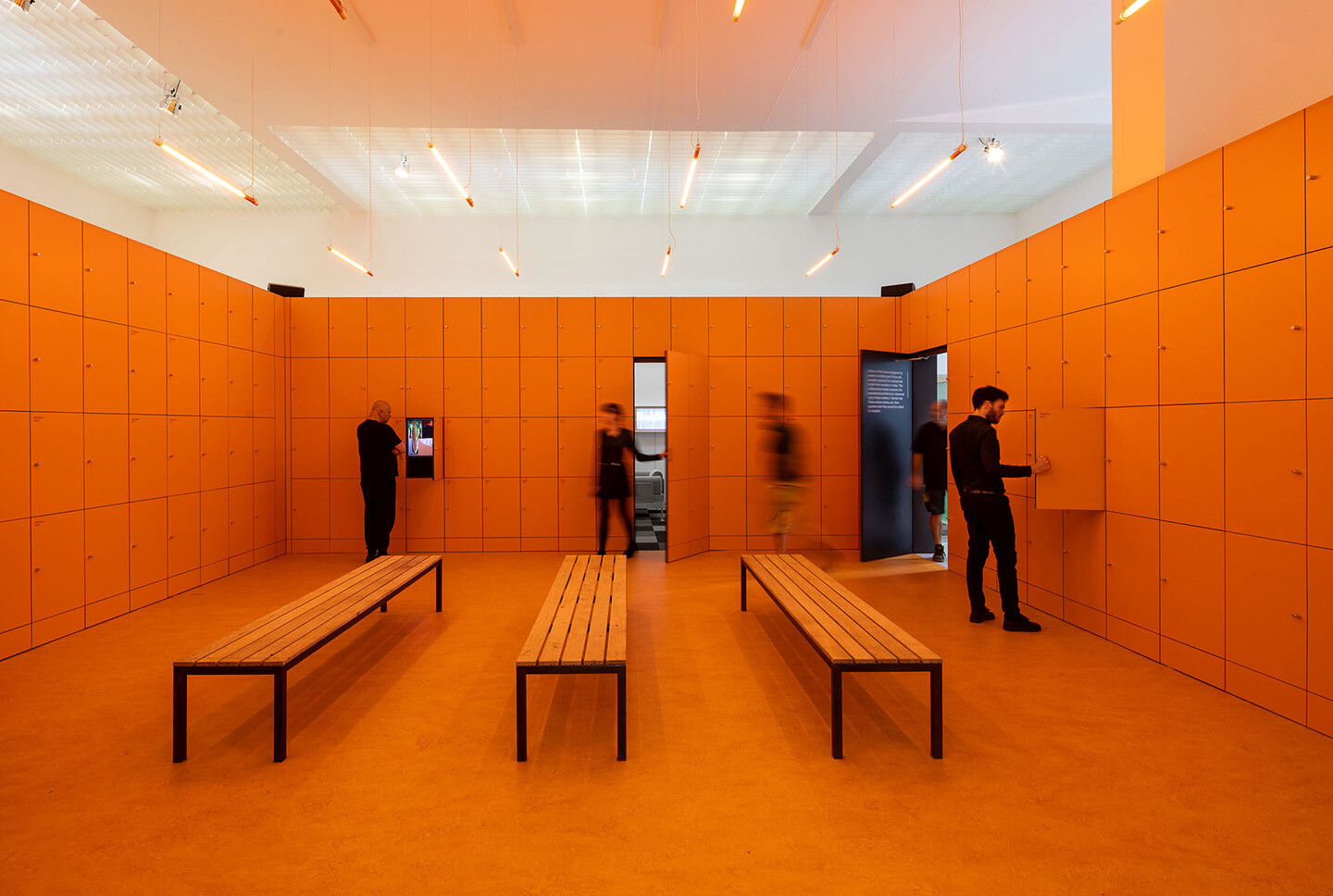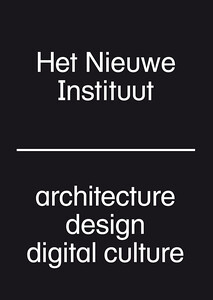The Dutch Pavilion at the 16th Venice International Architecture Biennale
May 26–November 25, 2018
Giardini
Venice
Italy
WORK, BODY, LEISURE
With the title WORK, BODY, LEISURE, the Dutch Pavilion at the 16th Venice International Architecture Biennale addresses the spatial configurations, modes of living, and notions of the human body engendered by disruptive changes in labor ethos and conditions. The project, commissioned by Het Nieuwe Instituut and curated by Marina Otero Verzier, includes contributions by a group of architects, artists, designers, historians, musicians and theorists selected by the curatorial team and through a number of open calls. This collaborative endeavor seeks to foster new forms of creativity and responsibility within the architectural field in response to emerging technologies of automation. A domain of research and innovation that, despite its ongoing transformation of the built environment and bodies that inhabit it, is still largely devoid of a critical spatial perspective.
#LOCKER ROOM
Welcome to the Netherlands, a testing ground where the future of labor has been and continues to be reimagined. For centuries, its physical landscape has been meticulously shaped and designed by human-machine enterprises. So has its societal structure. An emphasis on work and discipline over leisure manifests in its architecture, from the scale of the territory to that of the bed.
The flat horizon, managed and protected by flood control systems, and the regular division of land are reinforced by the greenhouses that sit on top of the precise geometric lots. In these enclosures of sublime beauty, the productivity of the ground is maximized by automated technologies. Inside, flowers and fruits flourish, their potential unrestricted by exterior conditions, their immediate surroundings, or soon, human labor. Beyond the greenhouse typology, climate-controlled interior spaces offer endless possibilities for experimentation. The flexible office has become a terrain of long shared tables and open spaces where workers no longer have a reserved seat, but rather reinvent their personal workstation every morning. Assisting these ever-changing communal spaces, walls of lockers present the systemic counter image of individualized, closed worlds for the administration of private identities and belongings.
Populating factories, storage facilities, co-working spaces, and the leisure-oriented architecture of the changing room, the locker facilitates the temporal reinvention of not only space, but also the bodies that inhabit it. The locker is an interface between the laboring and the non-laboring self, if any distinction between the two remains today.
The lockers in the exhibition chart a journey through a series of architectures in the Netherlands and beyond in which bodies are categorized and transformed: offices, playgrounds, farms, factories and virtual spaces, windows, beds, and doors. Scenarios that look familiar—if rarely accessible or seemingly banal—but are nevertheless at the epicenter of the transformation of labor:
#BED
Bed-In, by Beatriz Colomina
#DOOR
The Door(s) of No Return: On Technologies of Certain Bodies, by Amal Alhaag
#FACTORY
Songs for Hard Working People, by Noam Toran with Florentijn Boddendijk and Remco de Jong
#FARM
Renderlands: Installation, by Liam Young
#HARBOR
The Port and the Fall of Icarus, by Hamed Khosravi, Taneha Kuzniecow Bacchin, and Filippo LaFleur
#OFFICE
Automated Landscapes, by Marten Kuijpers and Victor Muñoz Sanz
#PATENT
The Institute of Patent Infringement, by Jane Chew and Matthew Stewart
#PLAYGROUND
Constant’s New Babylon, revisited by Mark Wigley
#SIMULATION
Safety Measures, by Simone C. Niquille
#WAITING ROOM
Shore Leaves, by Giuditta Vendrame, Paolo Patelli, and Giulio Squillacciotti
#WINDOW
Architecture of Sex Work, in collaboration with Amsterdam Museum and The Foundation for Responsible Robotics
Additional information
Publication
The publication Work, Body, Leisure reflects upon urban developments in which automated labor and leisure converge; addresses the ways in which evolving notions of labor have categorized and defined bodies at particular moments in time; and discusses the legal, cultural, and technical infrastructures that enable their exploitation. With contributions by AMO, Pier Vittorio Aureli and Maria Shéhérazade Giudici, Jonathan Beller, Silvia Federici, Ayesha Hameed, Femke Herregraven, Egbert Alejandro Martina, Francesco Marullo, Henk Ovink, Paul B. Preciado, Manuel Shvartzberg, Ekim Tan, Nathalie de Vries, Marina van Zuylen, among others.
Editor: Marina Otero Verzier
Managing Editor: Nick Axel
Graphic Design: Hans Gremmen
Published by Het Nieuwe Instituut and Hatje Cantz Verlag GmbH
The extended program of the Dutch Pavilion has been produced in collaboration with and supported by Creative Industries Fund NL. Read more about this collaboration.
Read more about WORK, BODY, LEISURE


